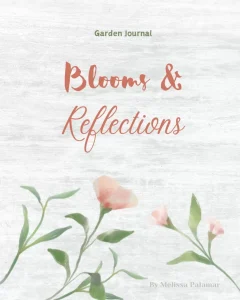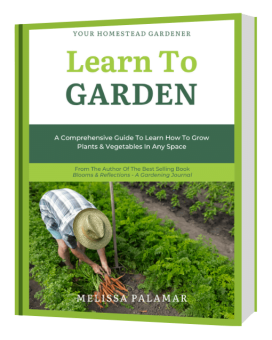Powdery Mildew: The Silent Killer Of Your Garden
As a plant enthusiast, you’ve likely encountered powdery mildew in your garden at some point. This sneaky fungal disease can creep up on your plants without warning, leaving behind a powdery white residue and ultimately causing irreversible damage. Don’t let this silent killer destroy all of your hard work! In this blog post, we’ll dive deep into the world of powdery mildew and provide tips on how to prevent and treat it so that you can keep your garden thriving all season long.
Introduction: What is Powdery Mildew?
Powdery mildew is one of the most common plant diseases, affecting a wide range of crops. The disease is caused by a fungus, which infects the plant by producing spores that penetrate the plant’s surface. The fungus then grows and multiplies within the plant, causing the leaves to become covered in a white powdery substance.
This fungus inhibits photosynthesis and prevents the plant from taking up nutrients. This can lead to stunted growth, yellowing leaves, and sometimes even death. This fungus is most commonly found in humid or wet conditions, where the spores can readily multiply. However, the disease can also occur in dry conditions if there is sufficient dust or pollen on the leaves for the spores to adhere to.
There are many different species of powdery mildew fungi, each of which can affect different types of plants. Some common hosts include roses, grapevines, cucumbers, squash, pumpkins, melons, and impatiens. In order to control the fungus effectively, it is important to identify the fungus and begin treatment early on.
How Does Powdery Mildew Spread?
Powdery mildew grows on the surface of the plant, causing a white or gray powdery growth. The fungus can spread quickly in humid or wet conditions, and can even be spread by wind. This disease can cause serious damage to your plants, and may even kill them if left untreated.
What Plants Are Affected by Powdery Mildew?
Powdery mildew can affect a wide range of plants, from annuals and perennials to fruits and vegetables. The fungus creates a white or gray powdery growth on the plant’s leaves, stems, and flowers. It can also cause the plant’s leaves to curl up or drop off.
It usually starts out as small spots on the plant’s leaves. These spots can grow and spread quickly, covering the entire leaf in just a few days. The fungus can also spread to other parts of the plant, including the stems and flowers.
Left unchecked, powdery mildew can weaken and even kill plants. The best way to prevent problems is to water your plants early in the day so that they have time to dry off before nightfall. This will help reduce the amount of moisture that the fungus needs to thrive. You should also avoid crowding your plants so that they have good air circulation.

The Only Garden Journal You'll Ever Need!
Embark on a journey through the seasons with ‘Blooms and Reflections‘ your companion in cultivating the garden of your dreams. This beautifully crafted gardening journal unfolds over 91 pages, offering a comprehensive space for all your gardening aspirations and practical needs.
Symptoms of Infection in Plants
The most common symptoms of powdery mildew are white or grayish-white powdery spots on the leaves, stems, and flowers of infected plants. These spots are usually more prominently visible on the upper surfaces of leaves, but may also occur on the undersides. As the disease progresses, the spots may coalesce to form large patches of mold. In severe cases, powdery mildew can cover an entire plant with a thick layer of mold, causing the leaves to yellow and wilt. It usually does not kill plants outright, but it can severely weaken them and make them more susceptible to other diseases and pests.
Preventing Powdery Mildew in Your Garden
This fungus can affect both outdoor and indoor plants. The fungus thrives in warm, humid conditions and spreads quickly through the garden. It can be difficult to control once it takes hold, so it’s essential to take preventive measures to keep your plants healthy.
There are a few simple things you can do to prevent powdery mildew in your garden:
- Choose powdery mildew-resistant plant varieties whenever possible.
- Keep your garden clean and free of debris. Remove infected leaves and stems from the plant as soon as you see them.
- Water early in the day so that the leaves have time to dry before nightfall. Wet leaves are more susceptible to fungal infections.
- Improve air circulation around your plants by spacing them properly and pruning back any overgrown branches.
Treatment for Infected Plants
Think you have powdery mildew? Don’t despair – there are several effective treatments available to treat the disease and save your plants. The first step in treating powdery mildew is to remove any infected leaves or stems from your plant. This will help stop the spread of the disease. Next, you’ll need to treat your plant with a fungicide. There are many different types of fungicides available, so be sure to read the label carefully and choose one that is specifically designed to treat powdery mildew.
Once you’ve treated your plant, be sure to keep an eye on it and monitor it for new signs of infection. Powdery mildew can be difficult to eradicate completely, so it’s important to catch it early and take action immediately if you see any new symptoms. With some care and attention, you can get rid of powdery mildew and keep your plants healthy and happy.
Conclusion
Powdery mildew can be a dangerous and destructive disease for your plants, but with the right knowledge and prevention tactics you can avoid it. Taking preventative measures like using the appropriate fungicides, avoiding overcrowding of plants, providing adequate air circulation, keeping an eye out for signs of infection early on, and maintaining proper soil conditions are all important steps to combat powdery mildew in your garden. With these tips in mind, you’ll be able to keep your garden healthy and free of this silent killer!

Want to learn how to grow like a Pro?
Unlock the secrets of a thriving garden! Enter your email below to get your FREE copy of ‘Learn to Garden‘ the essential guide that turns budding enthusiasts into green-thumb maestros. Let’s cultivate your gardening journey together, one leaf at a time!




